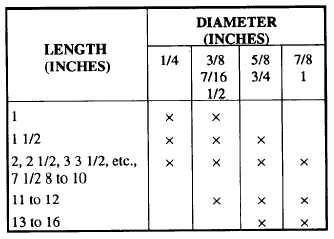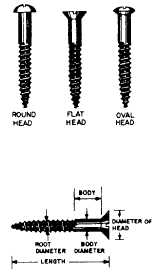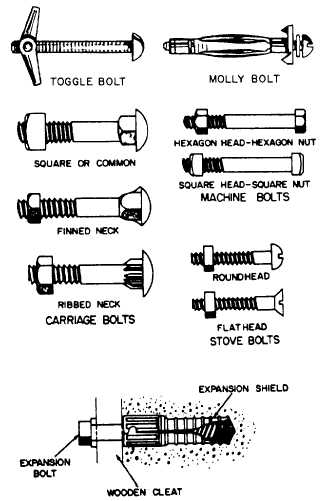
Table 3-11.-Lag Screw Sizes
eighths, screws from 1 to 3 inches increase by quarters, and screws from 3 to 6 inches increase by half inches. Screws vary in length and size of shaft. Each length is made in a number of shaft sizes specified by an arbitrary number that represents no particular measurement but indicates relative differences in the diameter of the screws. Proper nomenclature of a screw, as shown in figure 3-81, includes the type, material, finish, length, and screw size number, which indicates the wire gauge of the body, drill or bit size for the body hole, and drill or bit size for the starter hole. Tables 3-12 and 3-13 provide size, length, gauge, and applicable drill and auger bit sizes for screws. Table 3-11 gives lengths and diameters of lag screws.

Figure 3-81.-Types and nomenclature of wood screws.
BOLTS
Bolts are used in construction when great strength is required or when the work under construction must be frequently disassembled. Their use usually implies the use of nuts for fastening and, sometimes, the use of washers to protect the surface of the material they are used to fasten. Bolts are selected for application to speci- fic requirements in terms of length, diameter, threads, style of head, and type. Proper selection of head style and type of bolt results in good appearance as well as good construction. The use of washers between the nut and a wood surface or between both the nut and the head and their opposing surfaces helps you avoid marring the surfaces and permits additional torque in tightening.
Carriage Bolts
Carriage bolts fall into three categories: square neck finned neck and ribbed neck (figure 3-82). These bolts have round heads that are not designed to

Figure 3-82.-Types of bolts.
Continue Reading